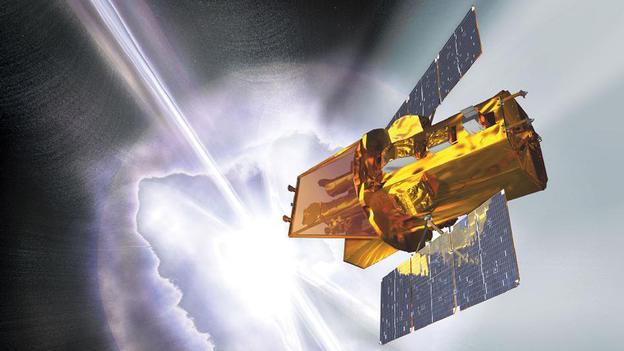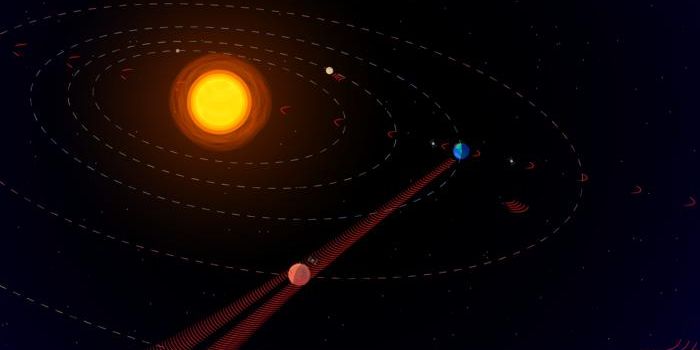Neil Gehrels is constantly monitoring the skies for potentially deadly gamma ray bursts. What are gamma ray bursts? "They're the most luminous, high energy explosions that have happened since the Big Bang," says Gehrels. He should know. He's the principal investigator for NASA's Swift mission. Swift is an orbital laboratory that was launched in 2004 for the specific purpose of studying gamma ray bursts. Is a gamma ray burst dangerous? "It's like a beam of gamma radiation that's flying through the Universe," says Gehrels.

What would happen if one of these beams hit the Earth? Gehrels says, "For a planet 1000 light years away, it would destroy the ozone layer. If it was just 100 light years away it could blow the atmosphere off." Scary, right? Well, don't let it keep you up at night. According to Gehrels: "The chances of that happening to the Earth is fairly small, about once in a billion years. ... It's certainly not as great a threat," he says, "as a giant asteroid hitting our planet. ... Still, it probably pays to keep an eye on them."
How does Gehrels do this, exactly? He heads an international team of scientists from the US, UK and Italy that operates the Swift satellite. Swift is named for its ability to quickly respond the roughly 90 gamma ray bursts it detects each year. The instant Swift detects a burst with its broad range detector, the satellite automatically orients its X-ray and optical telescopes toward the burst so that it can record as much data as possible about it. Each time Swift begins this operation it sends a text to Gehrels and the rest of his team back here on earth. Then, says Gehrels "[we] go to our laptops, log in and then get on the phone to teleconference with other members of the team." Once they complete the initial assessment, usually within about 15 minutes of a burst, they will issue an alert to other observatories on the ground so that they can point their instruments toward the gamma burst and start collecting data as well.
So what causes these gamma ray bursts? Before Swift was launched, no one was quite sure. But with ten years of Swift data, astronomers have become fairly confident in their understanding of them. The longer bursts, anything over about two seconds, are caused when massive stars collapse in on themselves, and form black holes. This, in turn, causes an explosion that blasts a jet of gamma rays out into space.
Any burst shorter than two seconds is categorized as a short burst. Again, using Swift data, Gehrels and his team have deduced that these are caused when two dense neutron stars collide. To give you some idea of how dense neutron stars are, keep this in mind: though they are just a few kilometers across, neutron stars have about the same mass as our Sun. This is why the explosion resulting from two of them colliding is so powerful.
Aside from warning us of a potentially catastrophic force, Gehrels and his team have learned some very important things from the gamma ray bursts they've been studying since 2004. "When a gamma ray burst goes off near a star with a planetary system, it can have a very important and destructive influence," Gehrels says. He and his team have also learned that these explosions are probably the source of all of the gold in the universe. Also, because some of the gamma bursts that Swift detects are so away from Earth, and because it takes light and all other forms of radiation so long to travel those immense distances, in studying gamma ray bursts, Gehrels and his team are, for all intents and purposes, looking back in time, in some cases to not that long after the Big Bang. "Before Swift," Gehrels says, "astronomers used to think the Universe was a steady set of stars and galaxies. But if we put on our gamma ray glasses and look up at the sky, it's always popping and bubbling and flashing - it's a very different kind of violent Universe."
(Source: BBC.com)









